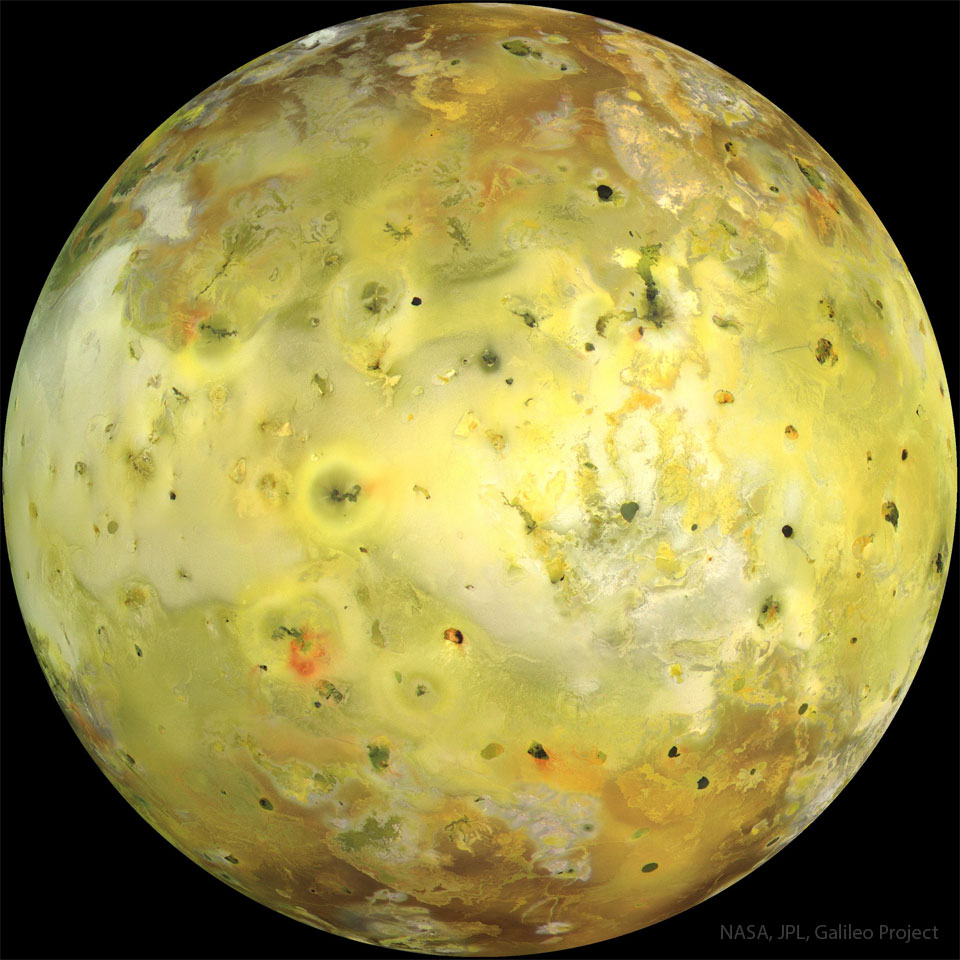2022年12月11日
Io in True Color
Image Credit: NASA, JPL, Galileo Project
Explanation: The strangest moon in the Solar System is bright yellow. The featured picture, an attempt to show how Io would appear in the “true colors” perceptible to the average human eye, was taken in 1999 July by the Galileo spacecraft that orbited Jupiter from 1995 to 2003. Io’s colors derive from sulfur and molten silicate rock. The unusual surface of Io is kept very young by its system of active volcanoes. The intense tidal gravity of Jupiter stretches Io and damps wobbles caused by Jupiter’s other Galilean moons. The resulting friction greatly heats Io’s interior, causing molten rock to explode through the surface. Io’s volcanoes are so active that they are effectively turning the whole moon inside out. Some of Io’s volcanic lava is so hot it glows in the dark.
Artemis 1 Coverage: Orion return and splashdown
Tomorrow’s picture: interstellar dust monster
木卫一的真实色彩
图像提供: NASA,JPL,Galileo Project
说明: 太阳系最奇特的卫星之色泽是鲜黄色的。上面这张由1995-2003年之间绕行木星的伽利略号探测船、在1999年7月时所拍摄的主题图像,试图呈现木卫一在凡人肉眼所见的“真实色彩”。木卫一的颜色主要来自硫和硅酸岩浆。木卫一不寻常的表面之所以能常保年轻,是因为它有活火山系统。木星强大的重力潮汐不停搓揉木卫一,并消去其他伽利略卫星所造成的摇晃。而造成木卫一变形所产生的摩擦,在其内部产生大量的热,使内部呈熔融状态,让岩浆从表面喷发出来。木卫一的火山极端活跃,火山活动等同于在把这颗卫星的内部全掏出来。有些木卫一的岩浆极为炽热,它们如处于暗处会发出的亮光。
阿尔忒弥斯1号报道: 猎户座飞船返回和溅落
明日的图片: interstellar dust monster







